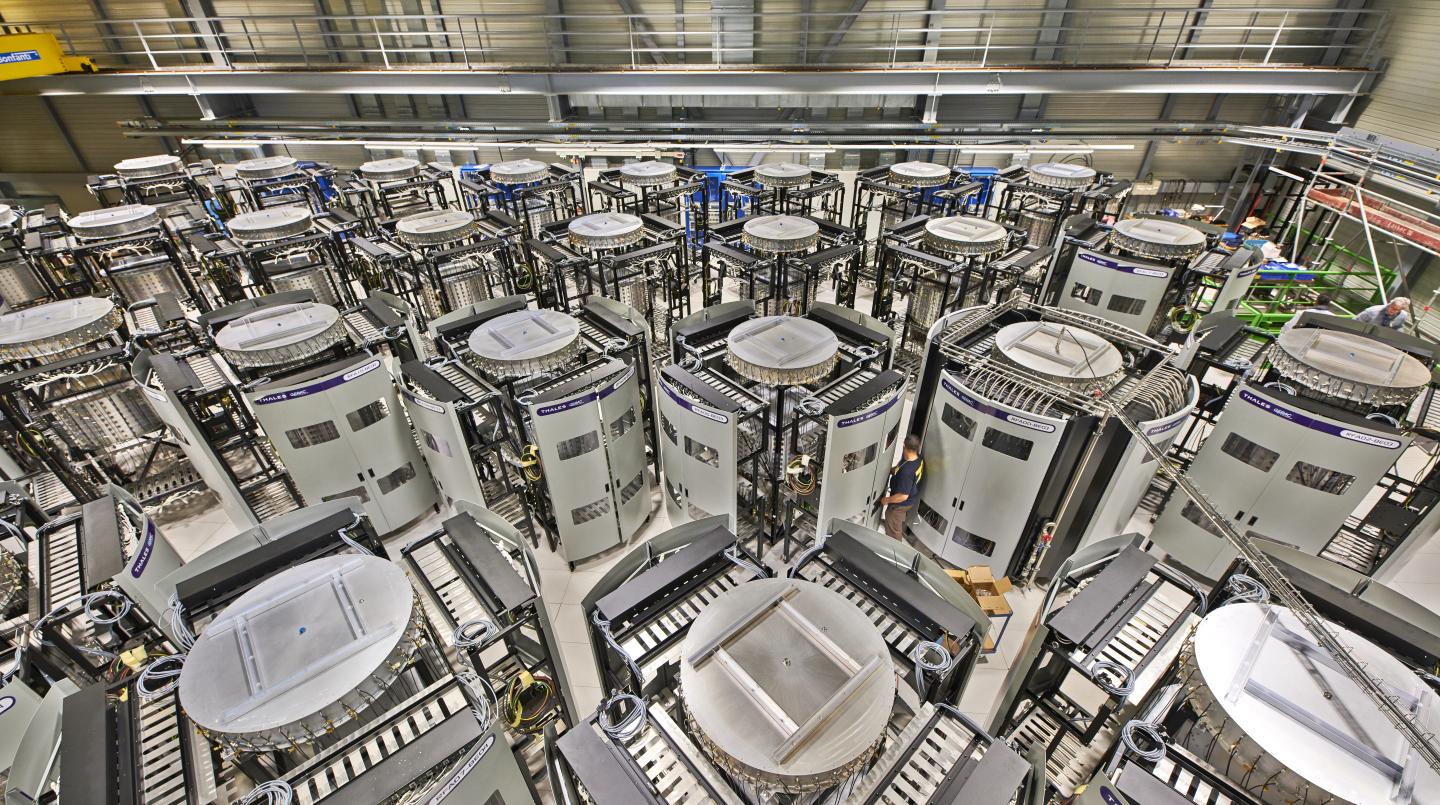Expertise in the design, construction, maintenance and upgrade of one of the most complex operational RF systems in the world.
CERN´s Know-How
- Decades of experience in operating large-scale, high-power RF systems
- Research and development of novel high- power, high-efficiency RF components and compact accelerating structures
- Development of unique software for the design of RF systems, and for simulation of dynamic RF phenomena
Facts & Figures
- 6.5 TeV: maximum energy of protons in the LHC
- 8: number of RF cavities per beam in the LHC
- 2 MV: maximum RF voltage of each RF cavity in the LHC
- 400 MHz: frequency of RF cavities in the LHC
Value Proposition
Read more about Radio Frequency Technology here.
Key Competences
Operation of high-power RF systems
The LHC has a very complex system of interconnected RF cavities and power components. In order to secure safe and efficient operation, CERN experts have developed significant expertise in the design and maintenance of large-scale, high- power RF systems.
Solid-state amplifier systems
The particle beams of the upgraded High-Luminosity LHC will be twice as intense as the current LHC. This upgrade therefore requires a huge increase in RF power. To meet this demand, CERN experts have developed expertise in the design of a new system that uses solid- state amplifiers (32 towers of 130 kW each, 80 modules per tower).
Digital Low-Level Radio Frequency (LLRF) Control Systems
The RF systems in the CERN accelerator complex must be precisely controlled to deliver optimum particle beam performance. Low-Level Radio Frequency (LLRF) control improves RF stability via electronic feedback and feedforward systems. CERN experts have expertise in the design of LLRF controls with powerful digital signal processing, enabling highly precise regulation for inherently complex and unstable systems.
Compact accelerating structures
Decades of accumulated experience in the acceleration of subatomic particles. At CERN, our experts carry out R&D to improve existing acceleration technologies and explore new avenues for future higher-performance, higher-gradient devices.
Superconducting RF (SRF) cavities
High-performance particle accelerators require high-efficiency acceleration systems that are reliable and that optimize power usage. One way to achieve this is by using SRF cavities. At CERN, our experts have significant know-how in the design, machining and assembly of niobium-coated, copper SRF cavities.
Design of novel high-efficiency klystrons
Klystron efficiency has a large impact on the operational cost of facilities using high-power RF systems. For the needs of the Compact Linear Collider (CLIC), CERN experts have developed significant expertise in the design of klystrons operating with high efficiency (60%+), at high peak power (up to c.50 MW).
Additive manufacturing for RF components
Additive Manufacturing is a promising technology for RF in a wide range of materials and applications. CERN is conducting ongoing research into novel methods for normal and superconducting RF components in different metals, particularly for use in harsh and/or complex environments.
Key Applications
Klystron simulation code “KlyC”
Almost all the 2D large-signal codes for klystron simulations are proprietary and not freely available to the wider klystron community. The klystron code KlyC1D/1.5D has been developed at CERN to bridge the gap between the fast, but approximate 1D models and the time/resource consuming PIC codes.
X-band and S-band test stands
The X-band and S-band klystron-based test stands at CERN are dedicated to the testing and development of high-gradient accelerating structures and high-power RF components.

